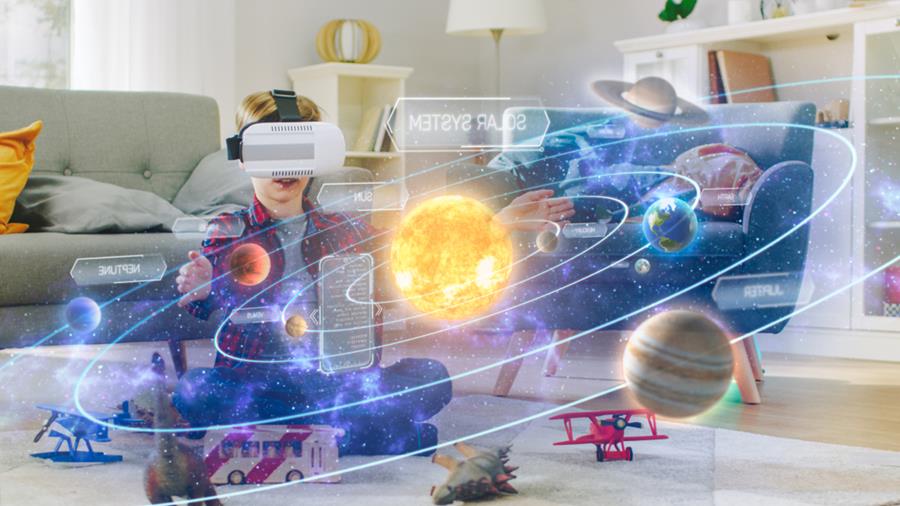Since technology has become widely popular, virtual technology has broadly impacted the teaching skills and academic sector. We have witnessed students facilitating immersive digital technology from the last few years.
It has advanced the teaching process from pen and boards to interactive technological tools. The implement of these tools helps the students quickly acquire the topic.

Besides, virtual technology has many benefits; many challenges come the route when we talk about incorporating them into our traditional classrooms.
The advantages of adopting virtual technology are undoubtedly more numerous. Still, there are a few cons that these technologies produce, making them a barrier to integrating into old-style classrooms.
1. Lack of Investment
Virtual technology is quite expensive and needs a heavy investment, one of the primary turn-offs for educational institutions planning to attain this technology.
Educational institutions today cannot pay these hefty amounts, though many modern institutions do take advantage of the virtual environment; not all educational platforms are financially sound.
Buying these tools is the deal; its installments, maintenance, up-gradation, etc.; all need a high cost to function.
This barrier is also one of the main reasons for inequality in the education world.
2. Challenges Faced By the Teachers
The traditional schools are all about chalks, books, markers, boards, etc., and the teachers are using these means of teaching since the very start. It’s not easy to shift them to virtual equipment with just a swipe.
Although various methods have come up, leveraging a teacher’s efficiency, we must not forget that operating such devices is not everyone’s piece of cake. While many teachers master this skill, many find it challenging to incorporate simulated technologies in their teaching method.

The teachers applying this technology also find difficulties using it, and many don’t recommend it to others.
Challenges that teachers usually face, according to WeAreTeachers, are:
- Frozen screens and tech problem galore
- The responsive students go MIA, and others start dominating the conversation.
- Dealing with unexpected glitches
3. Lesser Support from Administrators
Even in this modern era, schools and administration lack the knowledge and information of potential virtual technologies to change teaching and learning modes. They are least interested and discourage the idea of integrating innovative technological tools in traditional teaching methods.
The old generation administration is not in favor of instigating new tech tools in classrooms or other educational forums. The cost of these tools cover doesn’t even make them consider hiring such expensive means.
They are even not interested in providing incentives to their teachers to attend workshops and conferences to persuade virtual technology in classrooms.
Patrick Greene, A professor from Florida Gulf Court University, states that “there’s a two-step process to integrating technology into the curriculum, number one, teachers must learn hardware and software, and number two, they must learn how to integrate it.” But, we see that teachers are unaware of this tech information and cannot execute technology-enhanced methodologies into their classroom.
4. After-Effect Fears among Parents
Most parents are usually excited about integrating modern technologies in schools. But, some don’t know its use, and many fear the after-effects that may come along.

The fears of adverse effects on their children have drawn a significant concern among the parent. Therefore, they are uninterested in schools adopting such technologies and are not ready to collaborate or come forward and help students learn from home.
These parents are non-supportive and discourage the idea of applying virtual technologies in school. They don’t even work alongside teachers or assist their children in using such tools.
This phobia in them limits the educational institutions from employing modern virtual technology in their schools, colleges, etc. No matter how helpful they can be in opening up a child’s mind.
5. High Addictiveness
Technology advancement provides massive leverages to students and increases students’ possibilities of getting addicted to the virtual world.
As per ElearningIndustry, if people experience something better than usual, there are high chances of them becoming addicted to it.
The obsession with technology among students can negatively impact their mental and physical health, such as aggression, depression, anxiety, disturbed body posture, burning of eyes, muscular pain and numbness etc.

According to the Master Thesis, the most common issues found in students who are highly addicted to virtual technology are:
- Deficit of confidence
- Difficulty in communicating
- Lack of time control
- Increased anxiety
- Low academic achievement
Considering these issues, teachers and parents are least interested in employing virtual technology in educational institutions.
6. Deteriorates Human Interaction
VR Technology is one of the greatest assets for the educational field but also one of the main reasons for deteriorated human connection.
One of the main reasons schools don’t apply virtual tools in their teaching method is their ability to ruin traditional education and human interaction. Once immersed in the simulated world, students don’t like to come back to the real world or talk to anyone or disturb them.
It destroys interpersonal connections and damages the relationship among students and teachers, and destroys overall human connection.
7. Functionality Issues
The teachers who don’t recommend applying virtual technology in teaching methods stated that they had to face many functionality issues, such as software malfunctions, rumbling headsets, etc., which widely affected the learning as they had to wait until the tool got fixed.

These glitches are unexpected and can come anytime with a spend of thousands of dollars.
Virtual Technology Improves the Quality of Education and Creates Interest among Students
While there are a few disadvantages of employing virtual technology in educational institutions, they cannot beat the advantages. Studies confirm that students are more likely to pay attention to a dull subject when immersed in a virtual environment.
Virtual solutions to upload new content, one after another, have resulted in better learning and acquiring complex topics.
Schools in this era should not run away from integrating these modern tools into their traditional teaching methods because they can be massively used for students who are slow in learning or have special learning needs. This potent engagement tool can immerse students in a fabricated world and make learning easy and fun.
Students can experience concepts closely and explore things beyond imagination. Not only students but teachers can also embrace the productive potentials across their teaching methods and use these tools to make the learning precise and concise.
